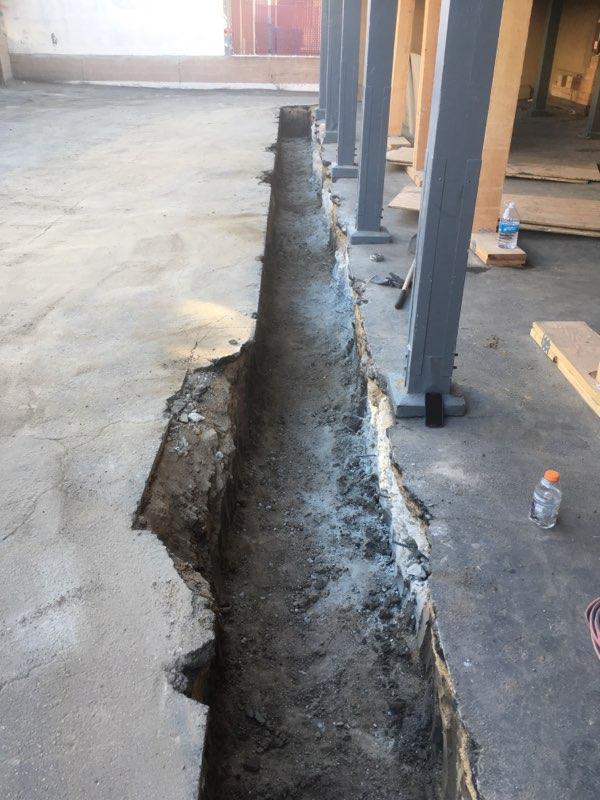When LA’s city officials were compiling their list of at-risk buildings for the Los Angeles Seismic Retrofit program, they found over 13,000 apartment buildings that were in need of a retrofit. With Southern California being one of the most earthquake-prone areas in the nation, a retrofit is necessary for public safety. Many long-time LA residents remember the Northridge Earthquake of 1994 and the devastation it caused.
In July of this year, the Ridgecrest area was rocked by two earthquakes back-to-back. The first one hit on a Thursday and measured 6.4 on the Richter scale. Residents thought the worst was over until the following day. On Friday the area was stunned when a larger quake, 7.1 rolled through. These were some of the strongest earthquakes to hit Southern California since 1999.
While many quakes are minor, the US Geological Survey found that more than 100 earthquakes roll through the Los Angeles area every year. For this reason, the seismic retrofit ordinances were passed. During their assessment, city officials found that two types of buildings were most likely to collapse during an earthquake, soft-story and non-ductile concrete. Almost all apartments built before 1980 fall under the soft-story classification.
Soft-Story Buildings and Fault Lines
For most property owners, their first question is, is my building a soft-story? In the city of Los Angeles, a popular apartment complex design used in the 1950s and ’60s was known as the “dingbat”. All dingbat apartments are soft-story buildings. To be classified as a soft-story the structure needs to have the following components:
• Three or more stories
• A ground floor with large open spaces
• One, or more, floors have large windows
• Tuck-in parking spaces
These buildings are vulnerable to earthquake due to the intense shaking created. In most cases, the upper floors collapse in upon themselves and whole buildings have been known to fall down like a house of cards. How resistant your building is depends on three different factors. How much does the building weigh, how close is it located to a fault line, and the highest hypothetical magnitude that fault line can experience.
Recently, the California Geological Survey located four new fault lines in the Los Angeles area. Many affluent neighborhoods sit along these fault lines, including Brentwood, Culver City, Pacific Palisades, Santa Monica, and Westwood. The new fault lines will significantly inhibit new construction in these areas located directly on the faults. Existing buildings pose a higher risk of collapse due to the foundations cracking during a seismic event.
The Santa Monica Fault
Santa Monica Boulevard is a vibrant stretch of road that runs from Santa Monica to Los Angeles. But, this long stretch lies directly over the Santa Monica Fault Line. The fault line runs through many dense neighborhoods and towns. The Los Angeles Times released a piece in 2003 that showed that a number of building plans were approved in these areas without any thought to seismic studies.
The Santa Monica Fault runs through many towns and neighborhoods. The list of cities that could be affected by an earthquake along this fault is quite long:
• Beverly Hills
• Brentwood
• Century City
• Mid City
• Pacific Palisades
• Rancho Park
• Sawtelle
• Westwood
These areas of West Los Angeles and Santa Monica have large populations with most apartment complexes being soft-story structures. All of the buildings and apartments built on, or near, the fault line have a higher risk of sustaining damage in a major earthquake. Maps from 2013 show that approximately 1,400 buildings are next to, or on, the fault line.
When the Los Angeles Seismic Retrofit Program was launched, it was considered to have some of the toughest ordinances in the country. But that changed when Santa Monica rolled out its own seismic ordinances soon after. Santa Monica’s ordinances have more requirements to meet their safety standards than are found in LA’s.
Hollywood has a fault line
One of the four new fault lines found in the Los Angeles area runs through Hollywood. This fault lies along the base of Hollywood Hills, between Sunset Boulevard and Santa Monica Boulevard. Like most cities in Southern California, this area has a huge population. Thousands of apartment complexes and other older structures are now sitting on, or next to this fault line. When the next major earthquake rolls through the Los Angeles area, many of these structures are at risk of collapsing.
What you can do to prepare
Don’t get caught in the next earthquake unprepared. Make a plan ahead of time to keep you and your loved ones safe. Start an emergency kit in your home or office. The kit should contain bottled water, a flashlight with an extra set of batteries, a first aid kit, and some canned food and snacks. Shockingly, the California State Department of Finance Records shows that less than 12% of residents and property owners have earthquake insurance.
But, to truly protect your family, residents, or coworkers, you can make sure to get your building retrofitted as quickly as possible. The process has many steps and takes months to complete, so if you haven’t started yet, now is the time to do so. The deadline for the Los Angeles Seismic Retrofit Program is 2020 for most soft-story structures.
How we can help
RetroFitting 360 is one of the leading Los Angeles seismic retrofit companies. We have completed numerous projects, with more in the works, throughout the greater Los Angeles area. Our specially trained contractors are highly skilled when it comes to retrofitting soft-story buildings. We offer a free initial consultation and we will be available to guide you through the process from beginning to end. To speak to one of our courteous staff to schedule your consultation give us a call today.


